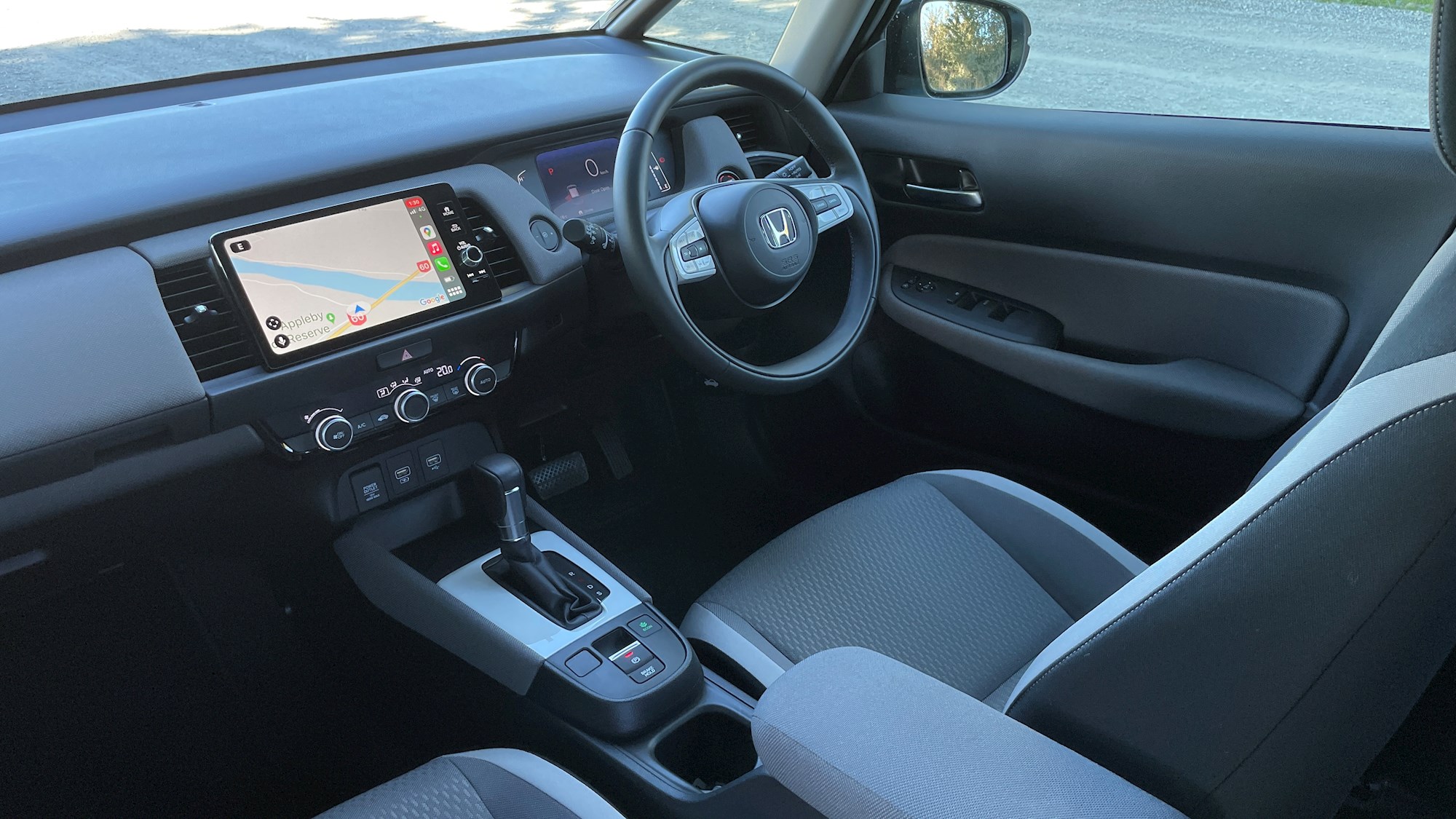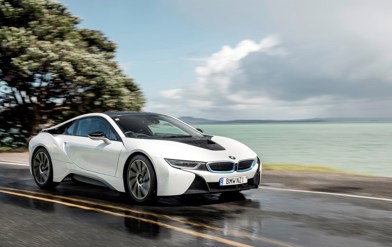Usability has always been the bottom line for Honda’s little Jazz, so it was almost a give-in that the high-riding Crosstar would be the star of the fourth-generation line-up.
In a world where small SUVs dominate sales charts, Honda adding the Crosstar to the Jazz range is a move that makes perfect sense, but not many would’ve been able to predict it. To Honda’s credit, only a few subtle changes have been made to turn it into an SUV, but the result is an awesome little package with seemingly limitless practicality.

Click here to view all Honda Jazz listings on DRIVEN
On the outside, you’ll notice the black plastic wheel arches, with the same material used across the bottom of the doors. New bumpers, fog lights, and the addition of roof racks are the other additions that differentiate it from the regular ‘Life’ model. It also sits 28mm higher than the regular Jazz, giving it genuine SUV credentials.
On the inside, the changes aren’t as obvious, but this new Jazz has one of the best interiors of any modern Honda. Unlike the H-RV, Honda’s other small SUV crossover, the Crosstar’s interior feels incredibly spacious, and the visibility is impeccable. The high seating position, small headrests, and the fact that it doesn’t possess a traditional ‘A’ pillar are all aspects that help with this.
Speaking of practicality, it’s impossible to talk about a modern Honda without bringing up the Magic Seat in the second row. As demonstrated by Driven’s Deputy Editor David Linklater, it has four main configurations to make your life easier. First of all, there’s the normal mode where the seats are functioning as regular seats. Then there’s ‘Utility Mode’ where the rear seats can be folded down to make a perfectly flat surface. ‘Long Mode’ is where the front seats are folded right down onto this flat area to make it easier to transport long objects. Finally, ‘Tall Mode’ is where the second row folds back towards the boot to create a tall space between the floor and the roof to transport something like a tall-ish pot plant.
The last fantastic aspect of the Crosstar’s interior is the dash. Arguably the best aspect here is the redesigned touchscreen infotainment system that is a drastic departure from what Honda cars have had in the past. This new screen is simple to use, is very responsive, and isn’t cluttered with too many features. The same goes for the air conditioning controls beneath this screen, and the two-spoke steering wheel which gives the cabin a retro feel.

Under the bonnet sits the same naturally aspirated 1.5-litre i-VTEC engine as the ‘Life’, which makes 89kW and 145Nm of torque. Power is sent exclusively to the front wheels through a CVT transmission, and Honda claims a fuel economy of 5.8L/100km.
This powertrain is perfectly adequate for the application, and has no trouble keeping around its claimed economy figure on a standard commute. For the most part, it’s a quiet affair, but gets notably noisy when pushed up through the rev range.
Like the ‘Life’ model, this Jazz Crosstar misses out on the Honda Sensing Tech suite, which means that systems like adaptive cruise and lane keep assist aren’t present. It gets standard cruise control, but the lack of an adaptive system feels a little archaic in modern times. If you want this suite, you’ll have to fork out the extra $5,000 for the hybrid-powered e:HEV Luxe.
In terms of cross-shopping, the Toyota Yaris Cross seems to be the benchmark for small Japanese SUV crossovers these days. It starts at $31,290, but isn’t as practical or quirky as the little Crosstar. One benefit of the Toyota is the fact that a hybrid variant can be had from $35,290, whereas Honda is yet to introduce a e:HEV variant of the Crosstar to the New Zealand market.











